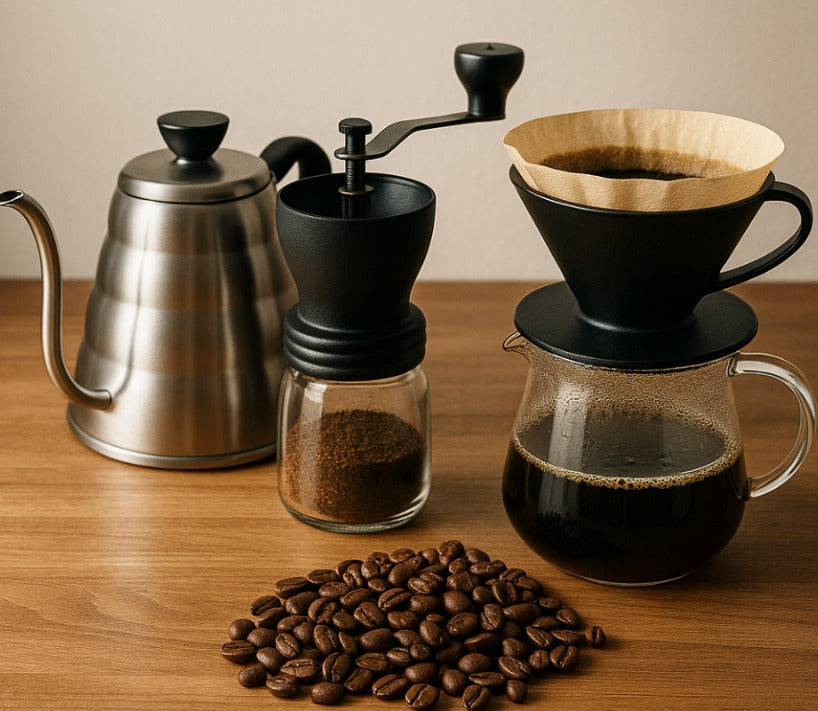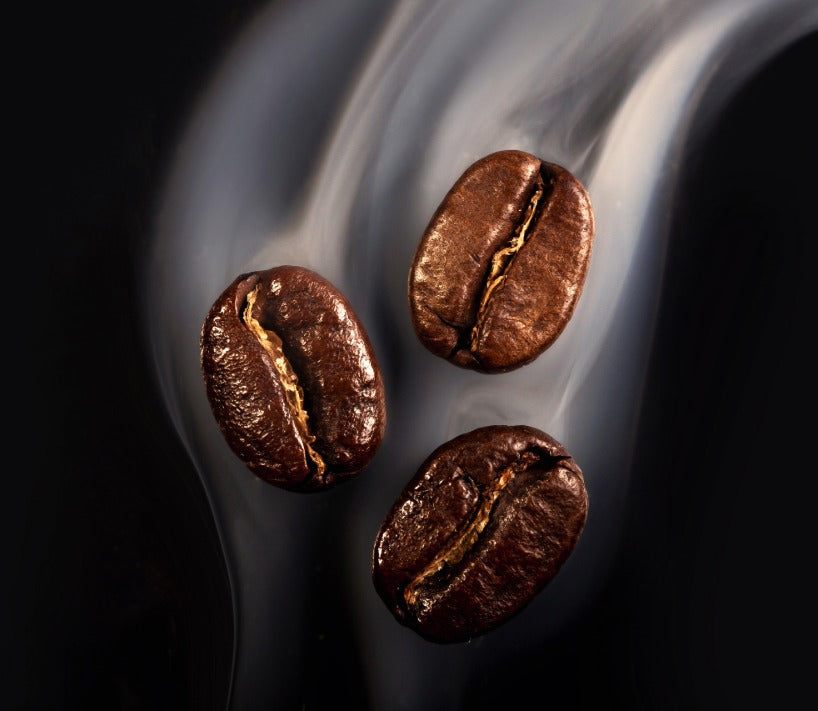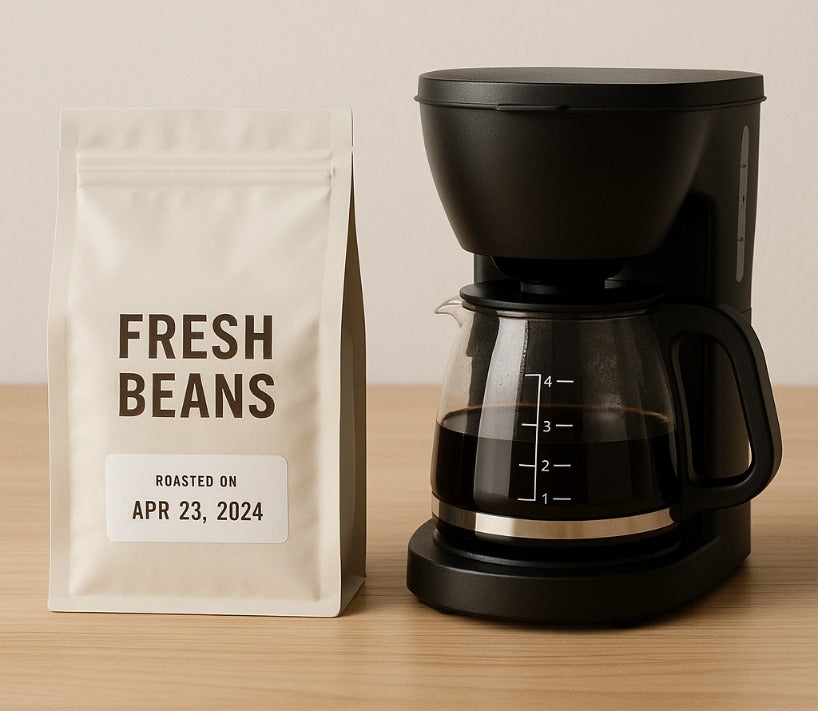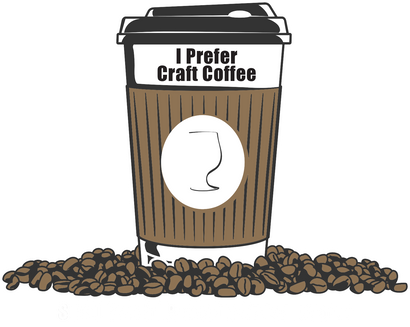Why Does Top Coffee Change Color During The Roasting Process?
October 05, 2024 2 min read
The Colorful Journey of Coffee Beans: Why They Change Hue During Roasting
Ever wondered why your coffee beans don't start off that rich, inviting brown but instead resemble tiny green peas? If you've been losing sleep over this (perhaps after too much top coffee), you're in luck! Grab a cup of the best tasting craft coffee at home, and let's dive into the colorful world of coffee roasting.
Coffee beans are the chameleons of the culinary world. They start their journey as green, unassuming seeds nestled inside bright red coffee cherries. But once they meet the roaster's heat, they undergo a dramatic transformation that would make any superhero jealous. So, what's behind this magical metamorphosis?
-
The Maillard Reaction: This is the culinary equivalent of a high school science fair volcano. When the beans are heated, sugars and amino acids react, leading to browning and the development of complex flavors. This reaction is responsible for turning the beans from green to a lovely light brown, much like the enticing hues you see when you order coffee online from your favorite roaster.
-
Caramelization: As the temperature rises, the sugars within the beans start to caramelize. This not only deepens the color but also adds sweetness and depth to the flavor. It's like nature's way of crafting the best craft coffee online, right inside the bean!
-
Chemical Changes: Roasting causes the breakdown of chlorogenic acids, leading to reduced bitterness and a smoother taste. That's good news for those of us who prefer sipping the best coffee delivered to our doorstep without making a bitter beer face.
-
Oil Development: In darker roasts, oils come to the surface of the beans, giving them a glossy appearance. These oils are packed with flavor and aroma, enhancing your coffee experience and making you feel like a home barista brewing top coffee.
But it's not just about the color change—it's about what that change signifies. The degree of roasting affects the flavor, aroma, and strength of your coffee. Light roasts preserve more of the original bean characteristics, offering a brighter acidity and more nuanced flavors. Medium roasts strike a balance, providing a fuller body and rich taste. Dark roasts, meanwhile, boast bold flavors and a robust profile, perfect for those who like their coffee with a bit of swagger.
So, the next time you're brewing the best tasting craft coffee at home, take a moment to appreciate the journey your beans have undergone. From humble green seeds to aromatic brown beans bursting with flavor, it's a transformation that makes each cup a small miracle of science and art.
Understanding why coffee beans change color during roasting not only satisfies your curiosity but also enhances your appreciation for that daily cup of joy. Plus, it gives you a fun fact to share the next time you're enjoying coffee with friends—or when you're justifying your next purchase from the best coffee bean delivery service!
Remember, great coffee isn't just about the destination (your cup); it's about the journey the beans take to get there. So here's to savoring every sip and celebrating the delightful science behind our favorite brew!
Also in Best Coffee To Buy Online Education

Brewing The Best Coffee at Home: Stop Waiting in Line
November 03, 2025 4 min read
Learn Brewing The Best Coffee at Home with a quick Proof → Promise → Plan system: choose fresh, roast-dated beans, use a simple 1:16 recipe at 200°F, and lock a 4–6 minute routine that beats the drive-thru on taste, time, and cost.

Best Tasting Coffee At Home: Stop Buying “Deals,” Start Buying Value
November 02, 2025 4 min read
Want the Best Tasting Coffee At Home? Skip old ‘deal’ beans. Use fresh, high-scoring, air-roasted coffee and a simple 1:16 plan. This guide shows proof, a clear promise, and a step-by-step plan to order smart, brew better, and enjoy sweeter, cleaner cups—daily.

Best Coffee To Make At Home: Fresh Beans, Simple Plan
October 31, 2025 4 min read
Learn the Best Coffee To Make At Home with a tiny, repeatable system: pick fresh, high-scoring, roast-to-order beans; brew at a simple 1:16 ratio; fix cups with one change at a time. Includes a comparison table, freshness rules, and beginner-friendly FAQs.
